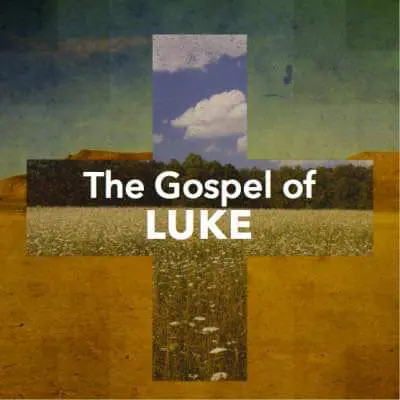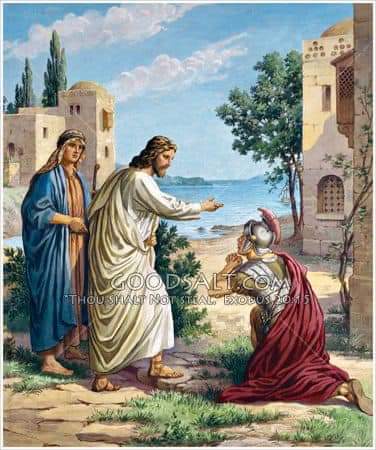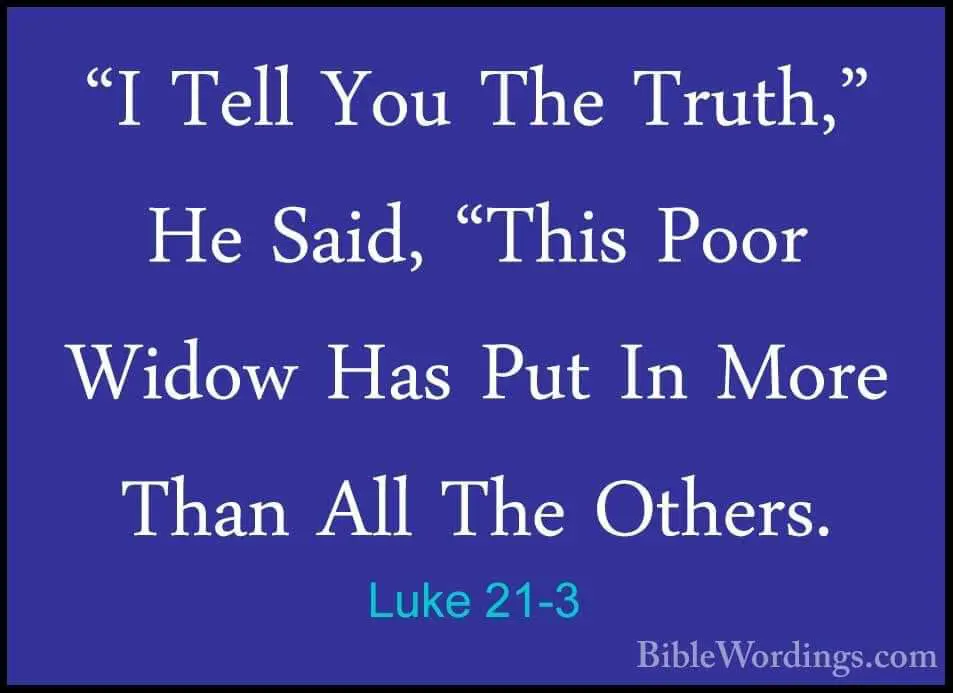KAIROS MINISTRIES ENCOUNTER PRESENCE, POWER & PROCLAMATION
In-depth Biblical Teaching of the Word!

REGISTER TO RECEIVE ZOOM LINK
Flyers

Bible Studies
(December 2019 Via Facebook)
Summary – The Gospel of St. Luke
Author - This Gospel, written by Luke is a companion volume to the book of Acts. They are both addressed to the same individual, Theophilus.
Luke was probably a Gentile by birth, well educated in Greek culture, a physician by profession, a companion of Paul at various times from his second missionary journey to his final imprisonment in Rome (2 Timothy 4:11).
Recipient and Purpose:The Gospel is specifically directed to Theophilus (1:3), whose name means "one who loves God" Luke wanted to show that the place of the Gentile Christian in God's kingdom is based on the teaching of Jesus. He wanted to commend the preaching of the gospel to the whole world.
The main theme of the Gospel is the nature of Jesus' Messiahship and mission, and a key verse is 19:10 .
Chapter Overview Outline:
The Gospel of St. Luke (Chapter Overviews):
With 80 verses, it is one of the longest chapters in the New Testament. It starts with Luke's Introduction to the book and states that it was written to provide an historical account the Messianic time-period. He focuses on the events leading up to the birth of Jesus, including the birth of John the Baptist.
This is my favorite Advent scripture. It was read for family devotion on Christmas morning.
Note: Verse 52: Jesus grew in: Jesus grew in wisdom and in stature and in favor with God and all the people. We should endeavor to do likewise.
- The Mission of John the Baptist Fulfilled
- The Baptism of Jesus and heavenly announcement
- The genealogy of Jesus (dig deep for total generations count)
- Jesus' fasting and temptation prior to start of His ministry
- Jesus rejection at Nazareth, his hometown and
- Jesus' overwhelming reception and ministry in nearby Capernaum.
Can you relate to #3 and 4. How?
- The call of disciples - four fishermen and a tax collector
- Jesus heals a leper’s (his healing ministry was prophesied)
- Jesus demonstrates His power to heal and forgive (make whole)
Note: Jesus uses Peter’s boat as a platform for teaching, then blesses Peter. Are you ready to “launch out into the deep?”
Controversy on the Sabbath, the selection of 12 apostles, and the Sermon on the Mount.
What’s your favorite Beatitude?
Jesus’ Ministry Continues. He
- healed a Centurion's servant,
- raised a widow's son from the dead,
- commended John the Baptist.
- emphasized the importance of forgiveness.
Forgiveness is mentioned 6 times Note the words "forgave", "forgiven", and "forgives" (Luke 7:42-43. 47-49).
The chapter opens with two major parables and closes with four powerful miracles. The two parables presented showed the importance of being receptive and of letting your light shine. (They would be a great point for study and discussion.)
Note: What is a parable? Short illustrations that convey spiritual lessons. They illuminate spiritual truths by placing them in an earthly context. They enabled Jesus to convey lessons to his disciples while concealing the truth from unbelievers.
Jesus feeds 5,000 men, is transfigured, Peter’s revelation concerning Jesus, and Jesus’ rejection in Samaria
Question:
Who appeared with Jesus, on the Mount of Transfiguration? One represented the Law. (Hint: He died and was divinely buried - Deuteronomy 34:5-7, Jude 9).
Note: One man represented the prophets. Hint: He never died, being taken to heaven in a fiery chariot
Major Points
1. Jesus appointed 70 other disciples and sent them out two by two, (Luke 10:9).
2. Jesus tells the important Parable of the Good Samaritan (Luke 10:29-37).
Note: Interesting Fact: The Good Samaritan used oil as a soothing agent, and wine as a disinfectant. In 2005 scientists discovered that olive oil is a natural pain killer. It contains an anti-inflammatory agent.
This chapter opens with the Lord's prayer, a parable about prayer, and the memorable ask-seek-knock teaching.
Verse 1: One day Jesus was praying in a certain place. When he finished, one of his disciples said to him, “Lord, teach us to pray, just as John taught his disciples.” Jesus:
- gives them a pattern for prayer
- instructs them to pray with a childlike confidence
Note: Prayer is an important topic in Luke 11. Of all the Gospels, Luke provides the most emphasis on prayer. In fact, Plummer, in his commentary on Luke, calls Luke “the Gospel of Prayer.” Luke, perhaps, is demonstrating that constant communion with God is critical for the acts of the Holy Spirit to be present in one’s life. When you read Acts, we clearly see the strong prayer-life demonstrated or adopted by the disciples (apostles) after Pentecost.
Congratulations you’re now half-way through the book of St. Luke’s Gospel. This chapter records a number of teachings and parables told by Jesus to "an innumerable multitude of people gathered together". Let’s call them attitudes for followers of Jesus. They include teachings on hypocrisy, fear, worry etc.
Jesus teaches using several illustrations. He shames his enemies when they question his healing on the Sabbath and grieves over Jerusalem.
Jesus' use of illustrations or parables are masterful. Take a brief look at the two below:
#3 - The Fig Tree: A Lesson in the Patience/Mercy and Judgment of God. It demonstrates the opportunity to repent but His judgment is definite for those who do not accept the gift of salvation.
#6 - The Narrow Door - Those who depend on their spiritual birth will be allowed into Heaven, while those with an earthly pedigree will not.
Also, Jesus' handling of his confronters and determination to stay on course with His mission on earth are admirable: something believers should desire to emulate. His message to Herod Antipas: “Go tell that fox, ‘I will keep on driving out demons and healing people today and tomorrow, and on the third day I will reach my goal.’
For greater insights, read the entire chapter.
It records one miracle performed by Jesus on the Sabbath, followed by various teachings and parables on dining and discipleship. We must count the cost and fully commit to following Jesus.
God’s Love for the lost. Triggered by the Pharisee's disdain of the company that Jesus kept, Jesus tells three parables about lostness: the lost sheep, the lost coin, and the most recognizable, the lost son (prodigal). Upon reading, you will note that each describes the finding of something lost item, and the joy and celebration that follows. The parables demonstrate that regardless of who they are, each person is precious to God and He rejoices even one lost soul turns to Him. We must remember that the primary charge or commission of the church to seek the lost and introduce them to Jesus has not changed.
The teaching of Jesus continues with two major parables:
- the untrustworthy steward (manager) who mismanaged his employees’ accounts. Jesus’ point to the Pharisees is that no one can serve two masters; one must make a clear choice between serving God or mammon (material goods) v. 1-18.
- the well-known parable tells of the relationship, during life and after death, between an unnamed rich man and a poor beggar named Lazarus. Lazarus ends up in Paradise in Abraham’s bosom, but the rich man ends up in hell. (v.19-31). You can read the text concerning the rich man’s request to Abraham for comfort and to even send Lazarus back as a evangelist to warn his brothers, which was not allowed. However, the point Jesus is making is about spiritual blindness. Just as the rich man's brothers won’t believe, regardless of who delivered the message, neither would the Pharisees, because their hearts were committed to disobedience.
Jesus provides instructions for His disciples in duty, thankfulness, and the Kingdom.
Jesus said, "If your brother repents, forgive him” and "In his day, the Son of Man will light up the sky."
You’ll also find the recording of Jesus healing of ten lepers but only one returned to say thank you.
The focus is prayer, humility and discipleship via parables and other instructions.
Parables that deal with prayer:
- V 2-8 - The widow and the unjust judge, an illustration of persistency - The overall purpose is to encourage believers to preserver in prayer and their faith regardless of the circumstances.
- Humility - V. 9 – 14 - the Pharisee and tax collector - an illustration of the content of the heart as one prays. The self-righteous Pharisee relied on his own power and deeds before God, but the tax collector relied on the mercy and compassion of God. The Pharisee’s prayer was rejected, while the prayer for mercy made by the tax collector was received. The message of this parable is; He who exalts himself will be abased, and he who humbles himself will be exalted,
Then Jesus uses the children brought to him as examples of humility. “Suffer them to come to me and forbid them not, for such is the Kingdom of God.
Discipleship: It’s not the man’s riches that disqualified him entering the kingdom of God, but his posture demonstrated that he valued his riches more than obeying Jesus.
Jesus heals a blind man who called out to Him: "Jesus, Son of David, have mercy on me!" Then those who went before warned him that he should be quiet; but he cried out all the more, "Son of David, have mercy on me!"
Then in verse 31, Jesus took the twelve disciples aside and predicted, for his death and resurrection, for the third time. He said: “We are going up to Jerusalem, and everything that is written by the prophets about the Son of Man will be fulfilled.”
Luke 19 find Jesus on the Road to Jerusalem. This final event in Luke's record and most inclusive narrative of Jesus' ministry on the road to Jerusalem. The most well-known include:
- The story of Zacchaeus captures the message of the Gospel and the transforming power of God's grace. As a principal tax collector, his job was to raise taxes for the Roman government. This profession was notorious for corruption but he climbed a sycamore tree so he could see Jesus. Jesus said to him, “Salvation has come to this house today because this man also belongs to the family of Abraham. The Son of Man came to find lost people and save them.”
- Jesus’ triumphantly rides into Jerusalem and tells the Pharisees that even if the people were to cease singing his praises, the very rocks would cry out. Chapter 19 sums up several of the themes that Luke has developed, including who may become disciples and how discipleship should affect one’s lives. It concludes with Jesus the Great Shepherd, seeking and saving the lost.
- Other events: Jesus weeps over Jerusalem and throws out the money changes from the temple.
Note: Calvary is in view now.
This chapter records the teaching of Jesus Christ in the temple in Jerusalem and his responses to questions raised by the Pharisees and Sadducees when they question his authority. As an overview,
- He tells the parable story of some evil farmers to illustrate two things: the Jewish leaders' contempt for their Messiah and their crushing by their Messiah. He is the cornerstone, and all who stumble over him are crushed.
- Additionally, he teaches about praying taxes to Caesar, the resurrection of believers, and the identity of the Messiah.
An Overview is provided to peak your desire for an in-depth study. Taking place in three geographical areas: Jerusalem, Judea and Mt. Olivet, Luke 21 records information concerning the widow’s gift, the destruction of the temple and Jerusalem and the signs of the end of the age and his return.
- The widow’s offering - Jesus noticed a long line of rich people who put in a lot of money. (many believe that it was a display to call attention to their extravagant gifts.) but the widow woman’s gift of 2 mites (about a penny), the equivalent of the smallest Roman coin, struck the attention of Jesus because she gave all she had. The widows offering was considered a greater sacrifice because “she gave out all she had.” I call this a matter of the heart or “a cheerful giver.”
- Jesus’ prediction of future events: the destruction of the temple (40 years later) and signs of Jesus’ return (discussed in greater detail in Matthew 24). He also warned them they would endure persecution, but God would give them the grace to endure. As history will record, John was the only Apostle that died a natural death.
An Overview: Luke 22 begins Luke's version of the passion. Jesus and his disciples celebrated the Passover in the upper room, He predicts Peter’s denial, prays on the Mount of Olives. Judas leads a mob to arrest Jesus. After the arrest, he faced trial before Caiaphas. While Jesus was being tried, Peter fulfills Jesus’ prediction by denying him three times.
Two events:
- The Passover meal launched the celebration of both Passover and the Feast of Unleavened Bread, which ran in the week following Passover. (Luke's introduction makes a reference to both.) Jesus’ earthly ministry was ending. His final moments with his disciples involve a farewell meal, he taught his disciples to serve others and commanded Peter to strengthen his brethren. "I will not eat [this meal] again until it finds fulfillment in the kingdom of God.”
- The Garden of Gethsemane, a garden at the foot of the Mt. Of Olives (vv39-53): After Supper, Jesus and his disciples went to the Garden of Gethsemane. This event appears in three gospels: Matthew 26 focuses on the Jesus’ submission to the Father’s will; Mark 14 addresses Jesus suffering in Gethsemane, and Luke 22 emphasizes the severity of His suffering. The weight of the assignment was heavy and “his soul was so sorrowful.” In Luke 22:42, he said: “Father, if thou be willing, remove this cup from me: nevertheless, not my will, but thine, be done. Reading all accounts will provide a broader perspective of the Atonement.
Read the entire chapter for the full chronology.
An overview: Jesus was arrested in the middle of the night and sent to the high priest's palace where he is interrogated. Then at dawn, the Sanhedrin officially meets to condemn him. Since no legal hearing on a capital charge could lawfully be held except in the courtroom of the Sanhedrin. Since they had no authority to render a death penalty, they must convince Pilate of Jesus' guilt prior to execution. "Then the whole assembly rose and led him off to Pilate." (23:2). Jesus stands trial before Pilate. Pilate finds Jesus innocent, but because of the crowd uprising, he sent him to Herod to try and wash his hands of the matters. Herod found no fault in him and returned Jesus to Pilate. Pilate wanted to release Jesus but gives in to the crowd, releases Barabbas and sentences him to death.
On the Cross - As soon as Jesus was fastened to the cross, he prayed for those who crucified him. "Jesus said, “Father, forgive them, for they don’t know what they are doing." Jesus dies between two thieves (one asks for forgiveness and Jesus accepts it. Jesus gave up the ghost and Joseph receives permission to give Jesus a proper burial.
The burial of Jesus (Luke 23:50-56) - The story of Joseph of Arimathea is told in all four gospels. After the death of Jesus, Joseph asked Pilate for permission to take Jesus' body and bury it properly. Permission was granted and the body was taken down. Joseph, helped by Nicodemus, wrapped the body in cloth with the addition of myrrh and aloes. IT IS FINISHED!
The crucifixion of Jesus is recorded in all four of the Gospels - Matthew, Mark, Luke, and John. You can read all four in parallel for greater details.
Overview: Luke 24 describes four post-Resurrection appearances of Jesus.
- On Sunday morning the women carry spics to the tomb to anoint the body of Jesus, but the tomb was empty. The angels assure them that he has risen from the dead. They ran back from the tomb to tell his eleven disciples—and everyone else—what had happened, but most ignored their story; however, Peter jumped up and ran to the tomb to look. Stooping, he peered in and saw the empty linen wrappings.”
- Jesus Walks the Road to Emmaus - He appears to two disciples on the way to Emmaus. They did not recognize him until He broke bread with them,
- Jesus Appears to the Disciples – Jesus appears to the other disciples, assuring them of his peace, though they had so lately forsaken him, and promising spiritual peace with every blessing.
- The Ascension (v.v. 50-53) - “Then Jesus led them to Bethany, and lifting his hands to heaven, he blessed them hen Jesus led them to Bethany, and lifting his hands to heaven, he blessed them. While he was blessing them, he left them and was taken up to heaven. So, they worshiped him and then returned to Jerusalem filled with great joy. And they spent all their time in the Temple, praising God.














